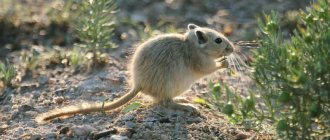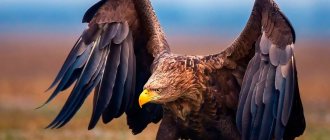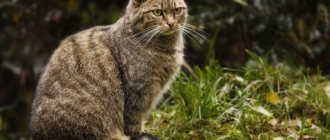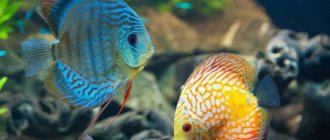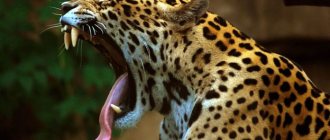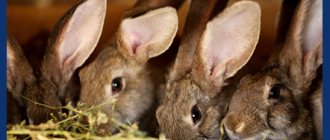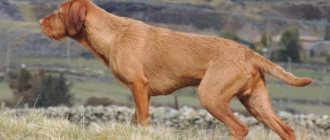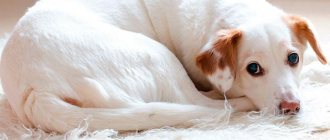What does the finch bird look like and where does it live?
- A finch is a songbird of the finch family. These cute birds always look elegant and beautiful.
- The finch is a small bird, usually weighing no more than 45 g, and the body length from head to tail is approximately 15 cm.
- Finches have a very bright, variegated color. Despite the fact that in human life we are accustomed to seeing women more elegant and beautiful, in bird life the opposite is often true.
Appearance
Bright and attractive feathers are a distinctive feature of the male, while females are painted in less flashy colors. Males most often look like this: a grayish back, the upper part of the tail is green, the wings are black and white, the chest is soft pink or burgundy, and the head is grayish, brownish or even bluish. The female finch is more similar in color to a sparrow; all her feathers are colored greenish, grayish and black.
- In the summer, these birds molt and, of course, lose their attractive appearance - the body turns brownish shades and colors.
Different species of finches live in different regions of the country, in different countries of the world:
- This bird species is found in Europe, Western Asia and North Africa.
- Most often, finches settle in forests, where they are comfortable and calm, but they can also be seen in parks, squares, artificially created forest belts , and even in gardens and vegetable gardens at home
- If the birds are not in danger, they happily settle near our houses.
Description
The finch is a member of the finch family. There are more than four hundred species of finches.
What does a finch look like? This bird is similar in size to a sparrow. The body length is 14.5 cm. The wingspan can range from 24.5 to 28.5 cm. An adult finch weighs from 15 to 40 g.
The beak is sharp and has an elongated shape. The tail is notched, its length can reach up to 0.71 m. The feathers are thick and soft.
Based on the color of the plumage, as can be seen in the photo of the finch, it is easy to distinguish between a male and a female. Distinctive features of the first:
- head and neck blue-gray;
- black forehead;
- the back is chestnut with a brown-gray tint;
- the lumbar region is designed in green and yellow tones;
- the rump consists of long gray feathers;
- black and white wings;
- pink-red lower part of the body.
The female's coloring is much paler. The color of the feathers is predominantly brown-gray. The chicks have the same color.
Note!
- Parrot: tips for choosing, the best breeds and rules for training different types of parrots (100 photos)
Eagle bird: description, species, lifestyle, habitat and interesting facts about the bird of prey (95 photos)
Parrot cage - features of choice
Sexual characteristics are also reflected in the color of the beak. In females it is a horny tint, and in males it is brownish-pink or bluish (in spring). That's all the description of the finch bird.
Origin of the bird's name finch
These birds have a very interesting and difficult name and, of course, we all wonder why they are called that way.
There is no clear opinion regarding the origin of the name of the finch bird, but there are the following versions:
- It is believed that the chaffinch was called the chaffinch because it does not tolerate cold and chilly weather. The need for such birds to winter in warm regions is also connected with this.
- Others, on the contrary, are inclined to believe that finches got their name due to the fact that they fly to warmer climes during chilly weather, but not because they cannot stand the cold.
- The Latin name of the bird translates as “cool,” so it can be assumed that the birds got their name because of the weather conditions in which they live and to which they adapt.
About the bird
Behavior of small birds in nature
Finches are birds that differ from other birds by their unusual behavior in nature.
Habitats
These birds are widespread throughout the world and therefore their habitat is quite extensive. They can live in Europe, Asia, Africa and eastern countries. Some species of birds are found in the British Isles and America.
Forests are the main habitat of finches
Many people are interested in whether the finch is a migratory bird or not. Some believe that such birds lead a sedentary lifestyle and almost never fly to other countries for the winter. However, in reality this is far from the case.
They cannot tolerate low temperatures and therefore we can say with confidence that finches are migratory birds. Most often, the search for a new wintering place is carried out by birds that have settled in countries with harsh winters. During cold weather, they fly to Eastern Europe or African countries. In places where finches winter, the air temperature in winter rarely drops below 3-5 degrees Celsius. If the frost lasts too long, the finches fly away to warmer climes.
For nesting, birds choose places where there are many trees. Therefore, they are most often found in forest areas, parks, squares and gardens. Finches rarely choose too dense forests for permanent habitat. Instead, they prefer lighter pine forests that allow sunlight to penetrate.
Diet
The finches' diet mainly consists of green plants and forest insects. Scientists studying these birds have come to the conclusion that they do not eat fruits and berries. They prefer to eat weeds.
Their plant diet consists of:
- quinoa seeds;
- nettle;
- coniferous tree seeds;
- cones;
- green leaves;
- tree buds.
Among the living creatures, finches prefer ants, larvae, bedbugs and beetles. These birds are considered very useful, as they bring many benefits to plants. They destroy weevils and also eat other plant pests.
Additional Information! Despite the fact that finches are very small, they have a strong and strong beak. With its help, these birds manage to cope with even the hardest food. They peck eggshells and hard seeds without any problems.
Reproduction
The mating period for birds begins in the first half of April, when they return from wintering. Before laying eggs, birds build a nest. In this case, females do most of the work. Males are engaged only in the extraction and transportation of building material.
Birds make spherical nests to lay eggs. The outer walls are insulated with lichen, moss and dry twigs. Some finches line the outside of their nests with birch bark to camouflage them from birds of prey.
During laying, females lay 5-8 eggs at a time. She incubates them for two and a half weeks, after which the first chicks begin to appear. The male and female are involved in feeding the offspring together. They feed them larvae, caterpillars and small spiders.
The chicks are raised under the female's wing for 15-20 days. After this, the second laying begins. It is carried out in a new nest.
Enemies
Finches living in the wild often become food for larger animals. Jays, crows and even woodpeckers feed on them.
Owls are the most dangerous enemies of finches
However, their most dangerous predators are owls. They attack defenseless birds at night when they are in their nests. Because of this, the average life expectancy of such birds does not exceed three lei.
Chaffinch: wintering or migratory bird?
The answer to this question has already been partially stated, but let's talk about it in a little more detail.
- Many people believe that finches are migratory birds because they do not like severe frosts, however, this is not entirely true.
- These birds can be migratory, nomadic or sedentary - this will directly depend on the climatic conditions in which the finches live.
Maybe sedentary
- If birds live in too cold regions, for the winter they will actually fly to where they will be warmer and more comfortable. Finches fly away with the onset of the first noticeable cold weather - during the first frosts, and return in early spring, most often finding snow still on the ground. Finches do not migrate alone, but in flocks of about 100 individuals. Every 5-10 hours they land to find food and rest.
- These birds do not always fly to other countries; often they simply move to the southern regions of their country of residence.
- If the finches live in the southern regions of the country or they manage to find a suitable place for wintering, they can remain for the winter at their permanent place of residence.
Lifestyle and habitat
The finch bird lives in deciduous, mixed, and coniferous forests. Does not like the deep taiga, where it is difficult to find food on the ground. Preference is given to sparse light forests and artificial plantings with mature trees and a cool microclimate. Often found in park areas, country houses and garden plots.
Many are sure that the finch is a migratory bird . It depends on the place of settlement. Flocks that have chosen central Russia and Siberia in winter go to the Mediterranean coast, to the floodplains of Central Asia. Some flocks reach the Canary, British Isles, North Africa, represented by Morocco, Tunisia, Algeria.
If finches initially settled in the southern regions, they lead a sedentary lifestyle or migrate short distances to neighboring regions without crossing the country’s borders.
Before departure, the birds gather in flocks of up to one hundred individuals. They fly fast -50–55 km/hour. For rest and food, they make long stops in the territories of small settlements, where they can refresh themselves. The flight is spread out over time and occurs in waves, but the bulk of the birds go to warmer climes in September. The flocks are heterogeneous; finches often join them.
They return to their permanent nesting sites from the end of February to the end of April. The further south the area is located, the earlier the birds appear. The males arrive first; their arrival is determined by their loud mating songs. The females arrive a week later.
The decline in the number of the species is affected by the deterioration of the ecological situation. From year to year, the area of deforestation increases, and the amount of agricultural land and forest plantations treated with pesticides does not decrease. Adverse weather conditions play a negative role.
Birds have many natural enemies, including squirrels, stoats, and large birds (magpie, jay, crow, woodpecker). During the nesting period, they destroy clutches and small chicks. The bird behaves carelessly while singing.
Carried away by roulades, the male finch raises and throws his head back, neither seeing nor hearing anything around him.
Finches spend the main part of the daylight hours sitting on a branch, slowly moving sideways along it, or jumping along the ground, looking for food. They fly at high speed and in waves.
During the mating and nesting period they create pairs, the rest of the time they stay in flocks. Thanks to their endurance, unpretentiousness and quick adaptation to their environment, finches are common in Europe. Their number reaches 95 million pairs.
The finch's singing encourages some people to keep the birds in captivity. If you have no experience, then it is better to choose another species that is easily tamed. Some individuals become attached to the owner, but for the most part the birds remain wild until death.
To adapt, the finch is placed in a spacious enclosure or a small cage covered with soft fabric. Having transplanted it into a permanent home, they cover it with a light-colored cloth, since when a person approaches, the bird hits the bars violently and does not calm down for a long time.
To hear the song, the male is kept alone, without a pair. In the presence of a person, the bird sings only when he is motionless. The dwelling is equipped with a bathhouse and perches. Place low containers with seedlings of spruce or pine.
The finch is fed canary seed, mealworms, ant eggs, meat and cereals. Hemp seed is allowed, but in limited quantities, since food with a high oil content leads to eye disease and abscesses.
When and in what month do finches arrive in spring?
- Despite the fact that finches fly away as soon as they feel the first serious frost, they fly home in early spring.
- Finches arrive to us in mid-February.
- Some of them arrive a little later - in March. And it even happens that finches arrive in April, but, as a rule, they always return home even when the ground is covered with snow.
They arrive when there is still snow
Males always return first and females arrive only 1-2 weeks after them.
Chicks
Chaffinch chicks are born two weeks after laying. They have visible red skin. Dark fluff covers only the back and head. The kids are helpless. Parents put insects in their beaks. During this period they should not be disturbed. Any outside interference will lead to the parents leaving the nest and the chicks to die.
By mid-June, the chicks are ready to leave the nest. The parents help the young birds for a few more weeks. By the end of summer, the pair may have a second brood. Only this time there will be significantly fewer eggs in the clutch.
What sounds do finches make: do they squeak, squeak, or sing?
Finches are amazing birds; their singing vaguely resembles the singing of a nightingale. It is worth saying that finches are capable of making a variety of sounds; they can squeak, squeak and, of course, sing. Moreover, their songs are very melodic, original and sonorous.
- Birds begin to sing in the spring, when their mating season begins. It is worth saying that males sing loudly and loudly, this is how they attract their females. Females, like small chicks, sing less attractively, not so loudly, ringingly and solemnly.
- The finch's song begins with very quiet, calm whistling - this is the first stage of the song, a kind of chant.
Finch trill
- Next we hear the most beautiful trill ; it does not last long, literally a few seconds.
- The bird ends its song with a very short but sharp sound, which is called a stroke.
- Finches also know how to “sip” - make sounds similar to a drawn-out “rrrrryu”.
- Almost every male can sing 5-10 different songs.
- If a whole flock of finches sings, you can hear several versions of songs at once.
finch singing
Ornithologists describe the beautiful song of the finch in a language that only they understand: “few-few-few-la-la-la-di-di-di-vi-chiu.” They call it a loud, rolling trill. The call sounds like “pink-pink”, “rrryu”. This is part of the melody before the ringing, perky trill. Each "verse" usually ends with short sharp notes, i.e. with a flourish. The finch sings (“rumps” or “kicks”) more readily at sunrise and during the day in sunny weather. In cloudy weather, the melodies are not so expressive. A frightened finch may make “hew-hew”, “hee-hee”, or “hew-hew” sounds.
By the end of July, the songs of finches are heard less and less often. The birds sing no longer as loudly, not at all as much as before.
Is it true that a finch screams like a cat when in danger?
Each bird, sensing danger, begins to make certain warning sounds. They warn not only the object of danger about the finch’s mood, but also all his comrades who are nearby that they should be wary.
- demonstratively expresses strong anxiety with a sharp, loud and repetitive sound with a wide range of frequencies. In these birds, such signals most often resemble “kicks”. The finch must make all such sounds loudly , obviously so that the enemy can see it and stop pursuing it.
Finches squeak loudly
- However, sometimes the finch does not want to stand out too much from the background of other birds and demonstrate its excitement. In this case, he makes sounds of hidden alarm. Most often they look like a long, very, very thin whistle that begins and ends almost silently. The finch usually gives such a signal once in order to help its comrades and warn them of possible danger, but at the same time not to give away itself and its location.
When in danger, a finch does not make sounds like a cat, it does not scream like a cat and, in principle, does not know how to imitate this animal.
Lifespan
https://www.youtube.com/watch?v=hQo9W8bUdVw
Finches are forest birds that look for food for themselves and their chicks on the ground. They are often victims of predators. Perhaps that is why they do not live long. Although in captivity their life expectancy is up to twelve years.
They are found very often in nature, so they are not rare or endangered species. Finches do not pose any danger or value to humans and do not cause harm. That is why you will not find them in the Red Book. Although there are many beautiful pictures of males with bright colors on the Internet. This suggests that the bird is popular among ornithologists.
We invite you to familiarize yourself with Feeding newborn calves: photos, videos, recommended diet
Where do finches build nests and why do they cover their nests with tree leaves?
- With the arrival of warm spring weather, finches begin to arrange their nests, since very soon they will bring new chicks into this world.
- Finches are not picky birds when it comes to arranging nests; the only condition they always strive to fulfill is to find a place for nesting that is not in dense thickets.
- Most often, these birds build nests on the branches of coniferous and deciduous trees. If the tree is leafy, then the nests are made closer to the trunk, preferably on the side branches. If the tree is coniferous, the nest is located on the edge of the branch, away from the trunk.
- Most often, finches build their nests at a height of 2-4 m, where it is safer, but not too high, and this is convenient, since with the appearance of the chicks, the female constantly descends to the ground to find food for herself and her babies.
- Finches are excellent builders; they always build strong and durable nests. To build them, only the most durable and suitable materials are chosen; dry branches, moss, leaves, feathers, fluff, soft materials that birds manage to find, and even cobwebs are used.
- It is characteristic of these birds that the females are engaged in the construction of nests, while the males can only obtain the necessary building materials.
- Since finches are often exposed to danger, they always camouflage their nests. And what could be better for camouflage in the forest than tree leaves? Nothing. That is why diligent and caring birds cover their nests with tree leaves, moss, and bark.
Finches nest, finches eggs
Nesting and breeding
Finches are among the first to return to their native lands when the snow begins to melt. First, the males arrive and acquire a nesting site, choosing sunny pine forests or spruce forests for it. Birds are not picky when choosing a place for a future nest, but they try to avoid dense thickets. Often they can fly to the same place and tree where they had to settle down last year.
The nest is a tall structure, resembling a deep bowl with strong walls. Finches use moss and lichens, fluff, wool, tree branches, birch bark and even cobwebs as building materials! The web gives special strength to the structure. It is usually located on a branch or fork of a tree at a height of up to four meters.
In this nest, the female lays 4–6 bluish eggs measuring 20x15 millimeters and incubates them for 15–18 days. The death of birds can be caused by approaching the nest of an enemy, for example, a person. In this case, the finches leave their place.
Only the hatched chicks are helpless; their life is completely dependent on their parents. Both parents bring insects and other food in their beaks for their chicks
The body of newborn chicks is covered with light down, which protects them from frost. Only the hatched chicks are helpless; their life is completely dependent on their parents. Both parents bring insects and other food in their beaks for their chicks.
In the northern regions, finches appear in mid-April, in the central regions - almost a month earlier. Having become somewhat accustomed, a married pair of finches begins to build a nest. It is most often located in the crown of a deciduous tree, at the base of one of the side branches. Birds camouflage their nest so skillfully that it is almost impossible to see it from the ground.
The female incubates them for two weeks, occasionally flying out of the nest only to warm up or find food. The male feeds her infrequently, being more interested in singing or quarreling with neighbors who have flown into his area. In one season, a common finch (photos and a detailed description of what these birds look like are given in this article) can make two clutches. The second lasts from June to August.
We invite you to familiarize yourself with what breeds of dogs there are photos
How do finches breed?
Finches are not the kind of birds that live in pairs all their lives, so one male can fertilize several females at once.
- First, mating games begin among the finches; the males sing their songs loudly, attracting the attention of the females. Sometimes real fights take place between males, because each of them can fall in love with the same female.
- After the female and male form a temporary pair, they begin to mate. This happens either on the ground or on branches.
- Then the female lays eggs and begins to hatch them. At this time, the male takes charge of providing for the pair; he brings various food to the female, since she does not leave the nest under any pretext.
- This process lasts 14 days, after which small, naked and red chicks , with barely noticeable fluff on the body.
- Finches lay their first clutch of eggs in mid-May. At the end of summer, this whole process will be repeated, the females will breed another offspring of chicks - in a new place, in a new nest and, possibly, with a new partner.
Reproduction
In the spring, finches, photos and descriptions of which are presented in the article, arrive in flocks, united by gender. Males return earlier. They stay separate from the females. The breeding process begins by luring female friends into their territory. To do this, males sing loudly. The sounds are similar to chicks chirping.
The mating season begins in March. Before luring a mate, males need to occupy a nesting site. Usually last year's place is chosen. If there are competitors near the nesting site, they are immediately driven out. Therefore, frequent fights occur between adults and first-year children.
During this period, males behave fussily, constantly fight, often interrupt their songs, and their plumage on the head is smoothed.
A female finch is nearby. She flies up to the male and sits next to him on a branch or on the ground. The female bends her legs and raises her wings and tail. Her head throws up, and a quiet “zi-zi-zi” comes from her beak. This is how a couple is formed.
A month later they begin to build their home. The female is considered to be the main one in this matter, and the male only helps. Researchers estimate that she picks up materials to build a nest from the ground. She goes down about 1300 times. The nest is built at a distance of four meters from the ground. Although the height and type of tree can be very different.
It takes a week to build the nest. Usually the nest has the shape of a bowl. The bird uses moss, thin twigs, grass, and roots as materials. The fastening is a web. The nest has rather thick walls - about two centimeters. The outer part is covered with moss, lichen or birch bark. The inside of the bowl is lined with feathers, down, and wool. Such a house cannot always be seen from the ground, thanks to good camouflage.
The female lays from 3 to 6 eggs. They have a greenish tint with irregular red spots. The female incubates them, and her partner brings food, showing care for her. But the male is not monogamous. He can find another female to mate with, not forgetting to take care of his offspring.
How do finches care for their young?
Finches are very caring parents; they do not leave their chicks, feed them and protect them from predators.
- After the appearance of small cubs, the female begins to leave her house in search of food for both herself and the children. But now taking care of them is not only the job of mom, but also of dad. The male also brings food to the chicks.
- It is worth noting that the chicks are constantly asking to eat, so adult finches are always in search of plant and animal food for the children (mostly animal).
Chicks
Male finches feed not only their own children, but also other people's chicks. They are always on guard, looking out for enemies, and when they see danger, they immediately give alarm signals to warn other parents about the possible danger.
- After another 2 weeks, the little chicks make their first flight; as a rule, the parents are in the nest or near it at this time.
Finch nutrition
The diet of birds varies depending on the time of year. In spring, it is dominated by last year's seeds, insect larvae, newly emerged leaves and shoots. In summer, beetles, caterpillars, ants, bedbugs, and weevils are added to the menu. Birds have a strong beak, which allows them to pierce the shell of a beetle or crack a nut.
As autumn approaches, a plant-based diet begins. During this period, mainly seeds of various plants are eaten. They like sunflower, hemp, and nettle. They will not refuse cones and berries either.
What do finches eat?
The diet of finches is very diverse, in this regard they are real gourmets.
- These birds eat not only plant foods, but also various insects. As a rule, insects form the basis of the finches’ diet in the summer, when the bird can easily get tasty “live” food for itself. The rest of the time, finches feed mainly on plant food, which they obtain by collecting and popping out cones and acorns.
- From plant foods, finches prefer to eat nettle, spruce, pine seeds, various flowers, tree buds, fruits and berries that they can get.
- Among insects, birds eat various bugs, flies, larvae, and they love to feast on various caterpillars and ants.
Plant food and insects
Nutrition
The finch feeds on insects and plants. Loves to eat weed and conifer seeds, fruits, berries, leaf buds, bugs, caterpillars, ants and beetles. In summer, animal food predominates in the diet of finches. By the way, they help cope with agricultural pests – weevils. A strong, powerful beak, as well as an uneven palate and strong facial muscles allow the finch to master the hardest food. It will not be difficult for a bird to break an eggshell or the chitinous shell of a beetle.
Interesting! Finches are the only ones from the finch family that feed their chicks exclusively with insects.
The female is engaged in the construction of the nest, and the male brings her the necessary materials for this.
Finch: interesting facts for children
The finch is a very beautiful, interesting bird, about which you can tell many interesting facts:
- 450 species of finches in nature .
- Very often they coexist in flocks with sparrows. At the same time, females are very easy to confuse with sparrows.
- To build a strong and comfortable nest, the hardworking female makes approximately 1.5 thousand descents to the ground and ascents to a branch.
- In nature, these birds live only a few years, but at home they can live up to 10 years.
- Finches are diurnal birds - they are active only during the day, but at night they rest.
- At home, finches do not sing beautiful songs and, in principle, rarely sing.
- The males of these birds are recognized as some of the brightest in color in Europe.
- Finches do not walk on the ground; they move in small jumps, often sideways.
- Even when flying from their nest, two-week-old chicks continue to eat what their parents get for them.
- Finches can fly at a speed of 40-55 km/hour. Despite this, most often they jump on the ground.
The brightest birds
Finches are small, amazing birds, whose lives are filled with bright events and emotions. It is very interesting to observe and study finches - now you know the most interesting facts about these birds and about their most interesting periods
From the following articles you will learn about birds such as:
- Peregrine Falcon
- Gull
- Cormorant
- Tap dance
Female plumage color
Adult females, unlike males, cannot boast such bright plumage. It is very important for them to be less noticeable during the period of hatching chicks, therefore the color scheme of females is calmer and more restrained. The plumage of the upper part of the body is dark brown in color, the lower part is slightly lighter, without sharp transitions.
The head and back of the head are greenish. The common finch differs quite a bit in color from an adult female in the first weeks of its life. The peculiarity of the chick's plumage is only a small white spot on the back of its head.
